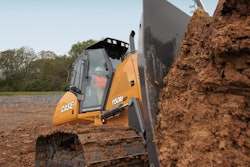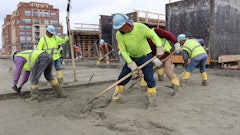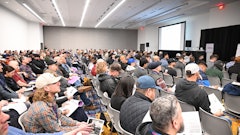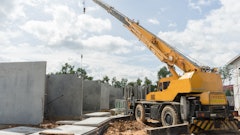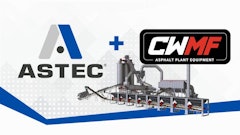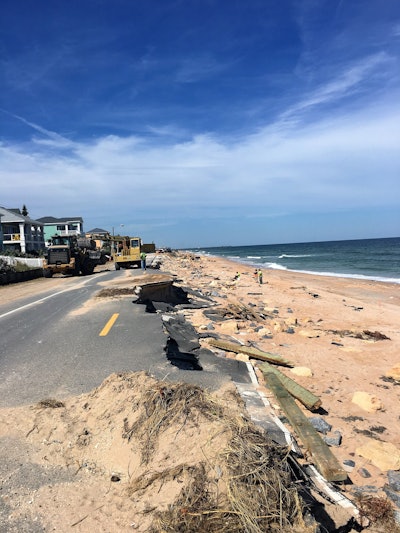
It was hard to miss the scare that hit the southeastern and northeastern U.S. coast in the form of Hurricane Matthew during the fall of 2016. This tropical cyclone became the first Category 5 Atlantic hurricane since Felix in 2007.
When large portions of state road A1A in Flagler County were destroyed, Halifax Paving, a heavy highway contractor and hot mix asphalt producer headquartered in Ormond, FL, was tasked with rebuilding the 1.3-mile stretch from Ninth Street North to 22nd Street North.
Time was of the essence, explains Fred Iannoti, purchasing manager at Halifax Paving in Daytona Beach, FL.
“Governor Scott wanted A1A opened in 15 days,” he says. “Normally, it takes between 45 to 60 days just to get work started. But in this case, bids were submitted on a Friday, evaluated on Saturday and awarded on Sunday. Halifax started work Monday and the road was reopened just 29 days later.”
Scope of the project
Although there was severe damage to the road, the state dodged a bullet with minimal structural damage, says Iannoti. Halifax Paving, which also specializes in heavy earthwork and site grading, was asked to reconstruct the eroded roadway embankment between S19th St. and S12th St., as well as repair the existing southbound travel lane where the embankment had washed out past the centerline of A1A between S21st St. and S 9th St.
The northbound pavement was to include a 12-foot travel lane and shoulder and extend an additional three feet to the east for placement of a temporary barrier. Halifax was also expected to construct 6,900 feet of new pavement immediately adjacent to the west of the existing southbound travel lane.
In addition to all of that, the company had to also install a 6,900-foot-long temporary concrete barrier and 1,000 feet of asphalt curb; remove and construct 400 feet of concrete sidewalk; replace/repair missing or damaged street light fixture shields; temporarily relocate 52 mailboxes; and reset, relocate or replace all signage and install new pavement markings.
The bid was awarded at $3,955,550.
“We also received a bonus of $990,990 for opening A1A in 14 days after starting construction,” says Iannoti.
Warm mix additive
In total, 3,800 tons were laid on this project. An asphalt base, structural asphalt, and friction course were laid using an 8-foot Vogele paver and Hamm 90 rollers.
The asphalt – a SP 12.5 provided by Halifax Paving - was used on all lifts, including the top lift of asphalt.
Halifax Paving used a warm mix additive from Evotherm on the A1A project.
“Our jobs before Evotherm were challenging,” reports Iannoti. “The mixes were gooey, difficult to compact and we were struggling with other mix issues as well. We needed reliability, mix consistency, workability, a compaction aid and a liquid anti strip.”
Halifax began incorporating Evotherm into various projects in 2014 after considering how it could help them address their mix challenges while also meet FDOT’s specifications.
“Evotherm was it,” shares Iannoti. “Mixtures became more workable and achieved more consistent density. When time was of the essence on A1A, Evotherm allowed us to quickly work the mix and achieve consistent density quicker than conventional paving.”
Small work space & sea turtles
Besides the tight timeframe, the biggest challenge, says Iannoti, was the extremely limited work space.
“There was one lane of access to the entire site,” he says. “Forty to 60 dump trucks and transports importing sand, rock, and barrier wall, 25 pieces of heavy equipment, and 35 employees working in one lane was tough.”
Iannoti says the large crew of 35 people working onsite was necessary to complete the project in the small window of time they had.
“Everybody worked together as one big crew,” he says. “One paving crew was there for the asphalt. Every employee had to work together to achieve the maximum production.
“We had to have three employees doing nothing but navigating trucks and equipment throughout the project,” Iannoti continues. “Once the sand was in place we were able to work from the top of the dunes and not have to deal with the tide issue.”
Night work was not permitted on this project due to it being sea turtle nesting season. Florida DOT also had a qualified biologist onsite each day to ensure sea turtle safety.
“Before beginning work every morning at sunrise, an environmentalist had to walk the whole job to see if any turtles came on the beach at night,” says Iannoti. “If there were any turtles, they had to be removed from the site before work could begin. In total, three turtles were found during the project.”
While it was a very challenging project, Iannoti says Halifax Paving was eager to step up to the plate.
“We were happy to be part of the solution,” says Iannoti. “It was a very stressful job, but our company did a great job working together as a team to complete the job ahead of schedule with no issues or injuries.”




